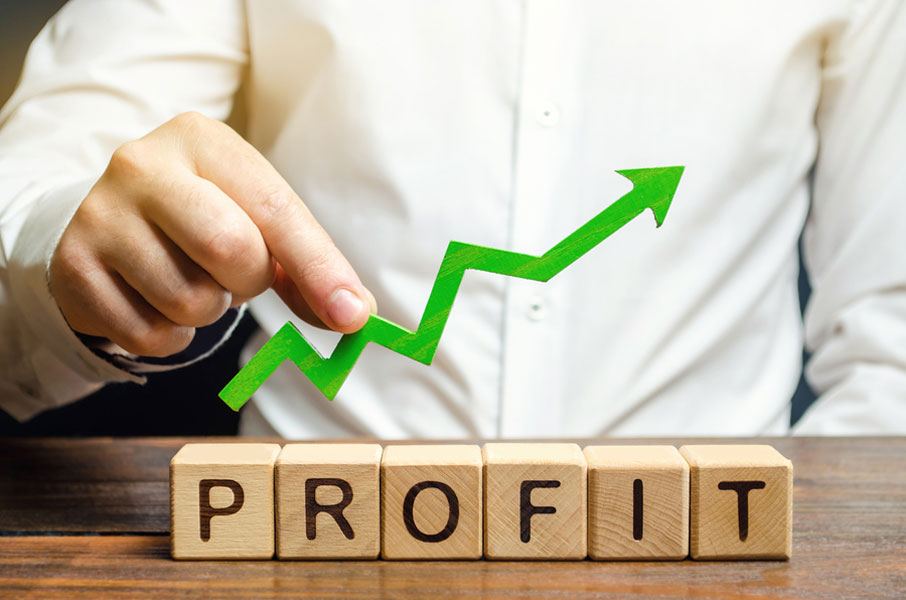We all know that in order to sell your Amazon FBA business for a decent price, it must first have a solid profit margin.
When you first establish an internet business, the profit margin may appear to be the most important consideration. Making money with popular items, steady monthly sales, and Amazon FBA support is exhilarating, especially as you watch the profits stream in.
But, what precisely constitutes a healthy profit margin for an Amazon FBA business?
There isn’t a single correct solution. Profit is determined by a variety of variables, and a good ROI will differ for each Amazon firm.
Furthermore, if you place too much emphasis on profit, you may discover that you miss other important aspects of the organization.
The profit margin might reflect the business’s longevity and success, but it is not the sole one. With this tutorial, we look at how much profit you should be making, how variable expenses affect you, and what you should focus on instead of high margins.
The Different Margins You’ll Find on Amazon

Amazon has two sorts of profit margins: operational and gross. Your operating margin is the amount of money you can return to the firm after sales, including fees and expenditures. Your gross margin is comparable, but it includes all fees from start to finish.
And when it comes to fees, these are the ones to be prepared for.
- Seller Account Fee: This is the monthly fee you pay Amazon to have a Seller Account. The basic plan costs $0.99 per item sold, and the Professional plan costs $39.99 for limitless sales.
- Referral Fee: Regardless of the category in which you sell, Amazon will charge you a fee on each sale that is a percentage of the product’s price.
- FBA: There are several advantages to adopting FBA, however, there are expenses associated with it (monthly inventory storage fee, and fulfilment fee per unit).
- Variable Closing Fee: This is the amount charged for mailing the item and is deducted from the final selling price.
What Is a Good Profit Margin for an Amazon Fulfillment by Amazon Business?
A profit margin of 100% is great for an Amazon FBA firm. That is, if you bought $10 on the goods, you would sell it for $20 and make a $10 profit (return on investment).
The 3x Rule
When it comes to profit margins for an Amazon FBA firm, the 3x rule comes up frequently. This is considered the gold standard for individuals new to Amazon FBA selling.
So, what exactly is the 3x rule?
The 3x rule is a straightforward selling approach based on the concept of selling a thing for three times what you spent for it.
Outgoings and Fees
When determining your profit as an Amazon FBA seller, you must include in the money you will spend. This is what defines the ROI and how much money must be re-invested in the firm.
The things you select to sell will be the initial investment. This is the beating heart of your company, and it will decide the eventual selling price.
Fees also play an important influence. Here are some of the costs you will face as an Amazon FBA seller:
- Fee for Seller Account: Amazon charges a minimal cost to open an account. The quantity of products sold or the kind of account determines this. If your firm is based on the continuous selling of low-cost products, the seller account fee might significantly reduce revenues.
- Fee for FBA.: Selling Amazon FBA is an excellent approach to save expenses and focus on your business. However, there are expenses associated with using the Fulfilled By Amazon service. Again, this might be paid per unit sold and must be considered for each specific item.
- Fee for Referral: Every item sold on Amazon incurs a referral fee. This is paid as a percentage of the overall sales price and is applied across all categories. Some categories, however, charge a lower referral fee than others. If you want to save money, think about the product categories you want to offer in.
- Closing Fee Variable: Amazon’s closing costs are a predetermined fee deducted from the final sale of an item.
Verdict
Knowing the mathematics behind what your items are accomplishing for you is the first step in calculating and maintaining healthy margins on Amazon. After that, you should constantly reprice your items to ensure that you are always as competitive as possible.
